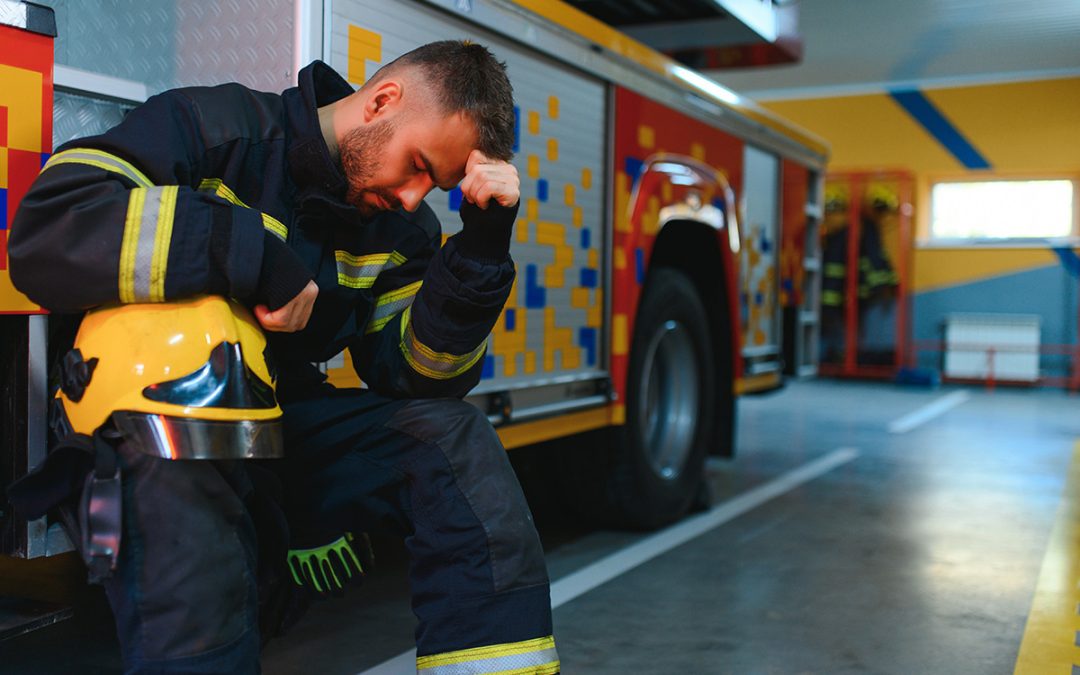When sirens blare and disasters strike, first responders are the ones who rush in. Police officers, paramedics, firefighters, dispatchers, correctional officers, and search-and-rescue crews shoulder a responsibility most of us can hardly imagine. They see the worst of human suffering—car crashes, overdoses, violence, fires, and natural disasters.
While the public sees courage and composure, what is less visible is the toll these experiences take on mental health. Trauma is part of the job, but it isn’t something the human mind simply absorbs without impact. In British Columbia and across Canada, more and more attention is being paid to the mental health of first responders, and how trauma therapy can play a central role in healing.
The Weight of Trauma
First responders are exposed to repeated traumatic events, often called cumulative trauma. Unlike a single incident, cumulative trauma builds slowly, each call layering over the last. Witnessing fatalities, responding to child injuries, or working through wildfire evacuations leaves deep impressions. Over time, these can manifest as:
- Post-traumatic stress injuries (PTSI) – intrusive memories, flashbacks, hypervigilance.
- Depression and anxiety – emotional numbness, irritability, or dread before shifts.
- Moral injury – the pain of seeing events or making decisions that clash with one’s values.
- Burnout and compassion fatigue – exhaustion from constant caregiving and crisis management.
For many, these struggles remain invisible until they begin to interfere with sleep, relationships, or the ability to function at work. In a culture that often prizes toughness and stoicism, admitting to mental strain can feel like weakness. That stigma is one of the biggest barriers to getting help.
Why Therapy Matters
Trauma therapy offers a safe place to process experiences that first responders often keep bottled up. Unlike talking to colleagues or family, therapy provides confidentiality, neutrality, and structured approaches for healing. Effective therapy doesn’t erase traumatic memories—it helps integrate them in a way that lessens their disruptive power.
Some approaches that have been particularly effective for first responders include:
- Trauma-focused Cognitive Behavioural Therapy (CBT): helps break cycles of avoidance, challenge negative thought patterns, and regain a sense of control.
- Eye Movement Desensitization and Reprocessing (EMDR): a method that uses bilateral stimulation (eye movements, tapping, or sounds) to help the brain reprocess traumatic memories.
- Somatic and body-based therapies: focus on how trauma lives in the body—through muscle tension, hyperarousal, or shutdown—and restore regulation.
- Group and peer therapy: connecting with others who’ve lived similar experiences, reducing the isolation that often comes with trauma.
What’s most important is working with a therapist who understands first responder culture. The jargon, the black humour, the shift work, the burden of responsibility—when a therapist “gets it,” trust builds more quickly.
The B.C. and Canadian Context
In B.C., the need for trauma-informed therapy has grown alongside the increasing strain on first responders. Climate-driven disasters—wildfires, floods, heat domes—have multiplied the number of traumatic events crews respond to. Add to this the toxic drug crisis, where paramedics and firefighters respond daily to overdoses, sometimes multiple times for the same individual.
Recognizing this, Canada has begun to shift its language from post-traumatic stress disorder (PTSD) to post-traumatic stress injury (PTSI), emphasizing that trauma impacts are an injury, not a weakness. This shift matters—it validates the experience and opens the door for treatment.
Healing Is Possible
The journey of healing for a first responder is rarely quick. Trauma therapy often begins with building safety—helping the nervous system learn to calm down after years of hyperarousal. Slowly, memories that once triggered panic or rage become more tolerable. Sleep improves. The constant feeling of being “on guard” eases. Relationships can begin to mend.
It’s important to acknowledge that therapy is not about erasing trauma or becoming “the person you were before.” It’s about integrating experiences in a way that allows life to move forward with less burden. Many first responders who engage in trauma therapy report not just relief from symptoms, but also greater compassion, resilience, and connection.
Shifting the Culture
Perhaps the biggest change needed is cultural. Therapy works best when it’s sought early, not as a last resort. That requires a shift from seeing mental health support as a weakness to seeing it as routine maintenance—like keeping equipment serviced or fitness training.
Some departments in B.C. are leading the way by embedding mental health training, offering regular check-ins with clinicians, and normalizing therapy as part of the job. When leaders model vulnerability and prioritize wellness, stigma begins to dissolve.
Conclusion
First responders give our communities their strength, bravery, and skill. But they are human, and human beings are not built to carry trauma endlessly without consequence. Mental health challenges in this field are not personal failings—they are occupational hazards.
Therapy offers a path forward, one that honours the depth of their experiences while helping them heal the hidden wounds. In British Columbia and across Canada, we are beginning to see more resources, more trained therapists, and more openness. The task ahead is to continue breaking down stigma, expanding access, and making trauma therapy as essential a part of first responder life as physical fitness or safety gear.
Because the people who rush in when we need them most deserve the same care and urgency for their own well-being. At Vista Counselling, we recognize this need and are proud to be able to support our first responders navigate their mental health challenges. Feel free to contact us to learn more.

